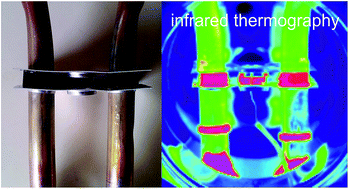Water sorption behavior of physically and chemically activated monolithic nitrogen doped carbon for adsorption cooling†
Abstract
In this work, nitrogen doped resorcinol–melamine–formaldehyde (RMF) resins were synthesized, pyrolyzed and physically activated with CO2. The influence of the activation time on the physicochemical properties and the water sorption behavior produced in this way was investigated. Furthermore, a comparison between physical activation with CO2 and chemical activation with KOH is presented. Materials performance was validated in an adsorption chiller test setup with a temperature step from 90 °C → 50 °C. The CO2 activated RMF carbon exhibits a maximal specific cooling power which is a factor of 1.7 higher in comparison to a commonly used, commercial silica gel reference material (430 W kg−1 compared to 255 W kg−1). This is surprising considering that the hydrophilicity of the CO2 activated carbon is rather low. The superior performance of carbon based sorbents is attributed to originate from the superior thermal transport properties of monolithic carbons over commercial silica gels. At a more feasible temperature swing 60 °C → 30 °C, the RMF derived carbon yields a specific cooling power 3.2 times greater than that of the silica gel reference.


 Please wait while we load your content...
Please wait while we load your content...